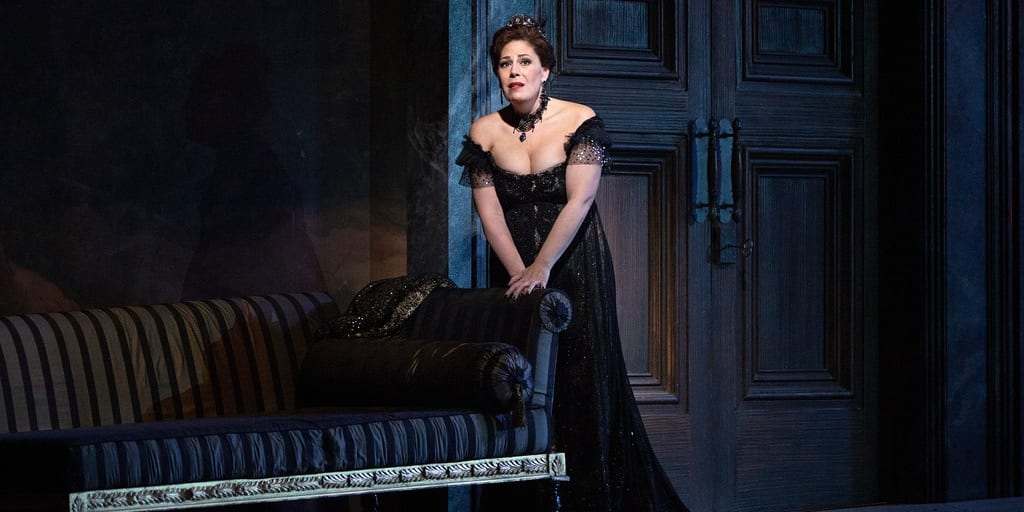Puccini’s Tosca is based on Sardou’s play, which observes Aristotle’s unity of time as its action unfolds over eighteen hours on 17-18 June 1800. The love and murder plot is projected against the historical and political reality of the period, when the state of Rome was disputed between Napoleon’s French Republic and the Kingdom of Naples.
The Met’s new production opened on 31 December 2017 and delighted the audience, as it replaced Luc Bondy’s dark, lurid one. John Macfarlane’s sets reproduce the real Roman sites chosen by Sardou (the Santa Maria della Valle Church, Palazzo Farnese and Castel Sant’Angelo) in a combination between realism and fanciful invention. The idea of giving a ceiling to the Act II room is brilliant, as it helps the voices project. The most striking feature of these otherwise traditional sets is the stage floor sloping leftwards. Edward Sava-Segal interestingly sees it as “a sign, perhaps, of the Calvary that the characters have to ascend” (Bachtrack). But since this is a strongly visual feature that literally disturbs the spectators, I would say it frames a world that has deviated from the right path and is morally crooked.
The first act stresses the Sacristan’s clown-like obtuseness (endearingly rendered by Carfizzi), as well as the tender ease and sexual attraction between the lovers. This, however, goes too far, as the tickling (reflected in the singing) and the quasi-blasphemous flirting in church do not ring true. The reaction of the audience, however, was quite unexpected: spectators guffawed at these slightly humorous cues.
Certain staging finds are quite felicitous: Cavaradossi’s thrill of joy when Tosca enters the church, the fact that he is one in a row of executed prisoners, that guards wash the blood spilt after each execution, and that a member of the firing squad pokes at the victims to make sure they are dead. But other details are definitely difficult to accept: the four eighteenth-century-clad extras, the fact that Tosca leans on Scarpia’s chest when she suspects Cavaradossi of infidelity, that Scarpia pulls her by her shawl in Act I, that he rhythmically pounds at his chest after the Te Deum, or that both Floria and her lover climb onto Scarpia’s sofa with their feet.
Radvanovsky might well be one of her kind in the history of opera: starting as a mezzo (which is still obvious in her round central range and strong chest voice), she proceeded to being a dramatic soprano, after which she “graduated” to the bel canto soprano drammatico d’agilità. That she can juggle with Donizetti, Puccini and Verdi is a miracle. In Tosca she dominates vocally from her first note and floods the stage with her rich, mellow, velvety timbre. Her interpretation is colourful and nuanced, as she imbues her singing with laughter or sobs, crescendi and decrescendi, dramatism and lyricism, and awe-inspiring long breaths. The end of her aria was particularly enthralling.
Calleja impresses through his beautiful timbre, sonorous central range and luminous high notes. His only strained sound was at the end of “Recondita armonia”. His rendition of “E lucevan le stele” was particularly moving.
Claudio Sgura, however, is anticlimactic after the other two principals. Vocally insufficient, he also breaks the flow of his phrases, singing each sound separately. His physical appearance is winning, as he is extremely tall, elegant and handsome, with a diabolical smile. But his acting is not internalised, and he is obviously ill at ease when he must touch Tosca’s breasts and crotch.
The orchestra under Maestro Rizzi’s baton sounded like musical gossamer in general, with two exceptions when the brass section was too loud.
The outstanding acoustics of the theatre completed the effect of an uplifting and rewarding night at the Met.

